
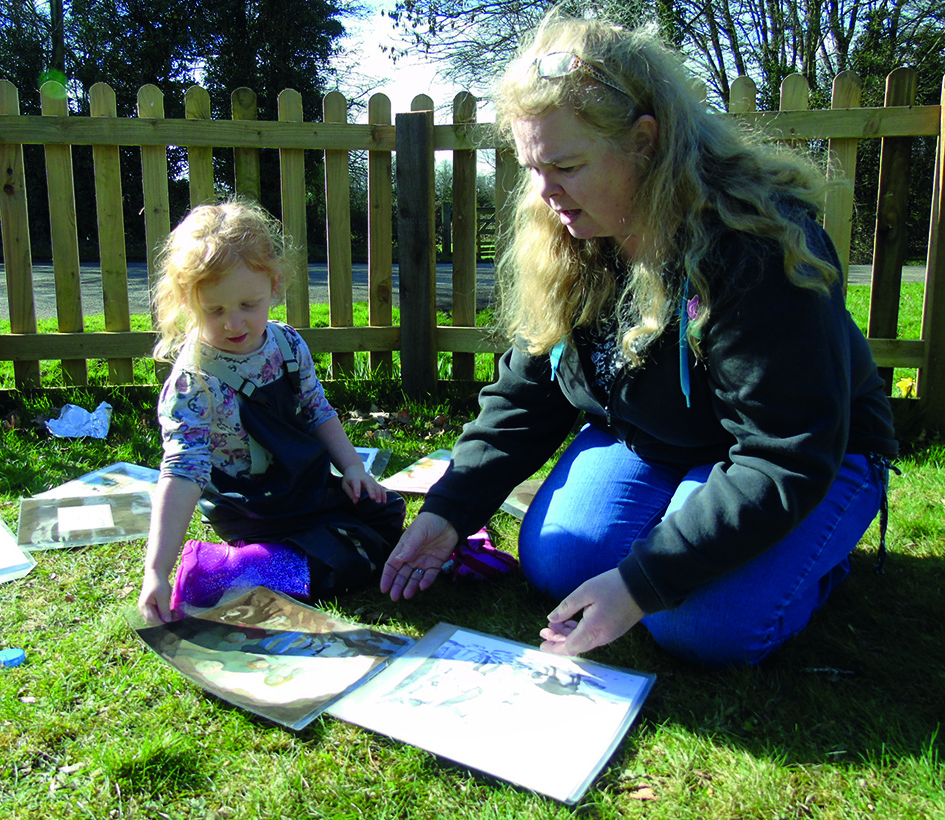 Nature (coding) Trail: create a coding trail using chalk or cones to mark a route through the garden. Use long, straight sticks, or printed cards, to make directional arrows. As children navigate the trail, they learn to interpret directional cues and understand sequential instructions. Extend the trail to include simple commands related to objects, such as carpet squares or logs: for example, log = jump over, carpet = walk around. For younger children, make this a follow-the-leader activity.
Nature (coding) Trail: create a coding trail using chalk or cones to mark a route through the garden. Use long, straight sticks, or printed cards, to make directional arrows. As children navigate the trail, they learn to interpret directional cues and understand sequential instructions. Extend the trail to include simple commands related to objects, such as carpet squares or logs: for example, log = jump over, carpet = walk around. For younger children, make this a follow-the-leader activity.
Code a story: choose a story children know the pictures and storyline of really well. Separate each page (or scan and print from a book) and distribute them around the garden in a random order. Children simply need to move around the garden to collect each page and lay them out to tell the story in sequence.
Use a Bee (bug) Bot outdoors: Explore the world of bugs by using small robotic toys. Children use basic coding commands to program the movements in sequence. You could chalk a route onto the paving.
in the moment – sorting nature
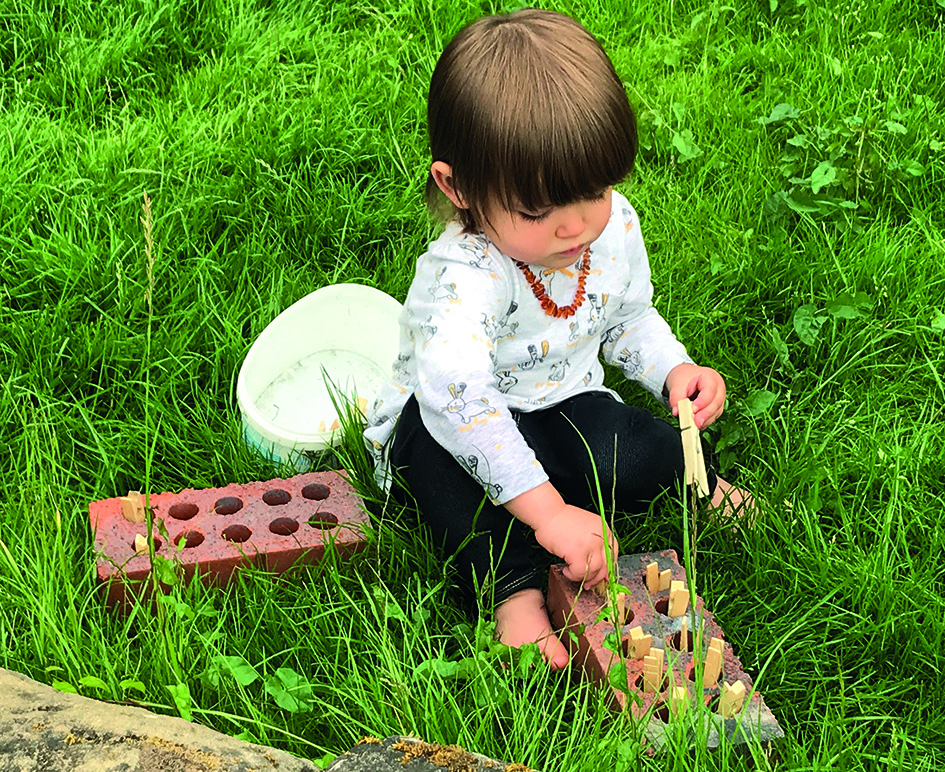 Nature hunt sorting games can promote observation skills, a key component of computational thinking. In coding, attention to detail, sequencing, pattern recognition systematic thinking and the ability to observe patterns and anomalies are essential for debugging and problem-solving. Sorting activities introduce the concepts of categorisation and classification. Use whatever is at hand to encourage children to categorise items based on characteristics – as programmers categorise data in coding.
Nature hunt sorting games can promote observation skills, a key component of computational thinking. In coding, attention to detail, sequencing, pattern recognition systematic thinking and the ability to observe patterns and anomalies are essential for debugging and problem-solving. Sorting activities introduce the concepts of categorisation and classification. Use whatever is at hand to encourage children to categorise items based on characteristics – as programmers categorise data in coding.
- Notice and sort by attribute, for example, by leaf colour, size or shape. Sort the leaves (or flowers, pine cones) into circles or tens frames or onto large tarps with a sorting frame masking-taped on. Ask children to describe each leaf and explain which category they plan to place it in. Look online for ‘Carroll diagrams’ – they are an interesting additional way to present sorted data.
- Create pattern paths – gather at least ten similar objects from the playspace; for example, pine cones, bouncy balls, small-world dinosaurs, conkers, UniLink cubes. Offer a pattern or sequence using these objects, then invite children to replicate the pattern by adding new elements.
- Introduce Leaf Logic, a ‘one change at a time’ game; you’ll need a large collection of leaves with lots of different and similar attributes. Begin a sequence in which one attribute changes each time a leaf is added: e.g. start with a large green leaf with smooth edges. The next may be small, green with smooth edges; the third small, brown with a smooth edge; the fourth small and brown with a serrated edge.
continuous provision – encouraging spatial awareness and problem-solving
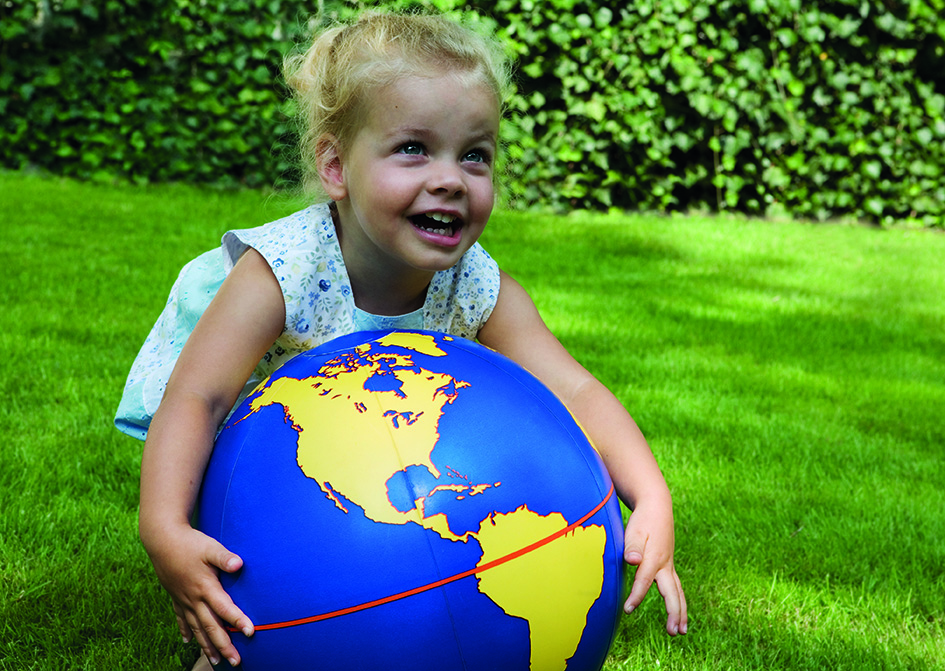 Many of the outdoor resources you already have will lend themselves to playful computational thinking, and it’s straightforward to rethink or repurpose familiar resources. Here are some good ones:
Many of the outdoor resources you already have will lend themselves to playful computational thinking, and it’s straightforward to rethink or repurpose familiar resources. Here are some good ones:
- Sets of coding cards or tiles with symbols representing different commands (e.g. move forward, turn left, turn right, go backwards) to create sequences and practise logical thinking.
- Storybooks or picturebooks that introduce coding concepts in a fun and engaging way, suitable for reading aloud or independent exploration. Computer Engineering for Babies by Chase Roberts and Baby Loves Coding by Ruth Spiro are good examples.
- Paper maps and globes of various scales and types (e.g. world maps, local maps and floor carpet mats, globe bouncing balls) for children to explore and learn about different geographical features and locations.
- Laminate maps or road atlas pages for use in pretend play in the wheeled toys area outdoors.
- Use digital maps such as Google Earth to help children gain a different perspective on their setting and neighbourhood. A simple way of rooting an understanding of maps is to identify a large tree that children are very familiar with, and locate it on Google Earth. Work out from there, picking out buildings and features that children know.
- Jigsaw puzzles featuring maps of different regions or countries, allowing children to develop spatial awareness and problem-solving skills while assembling the puzzles.
- Curate a set of basic mapping tools such as rulers, string and magnifying glasses for children to use during mapping activities.
- To explore scale with three- and four-year-olds, who can walk at about 3km per hour: Using the scale on your maps, cut pieces of string that represent ten minutes of walking (e.g. about 500m worth of string) so that children can calculate and estimate how far local places are from your setting, or from their home.
Enhancement –
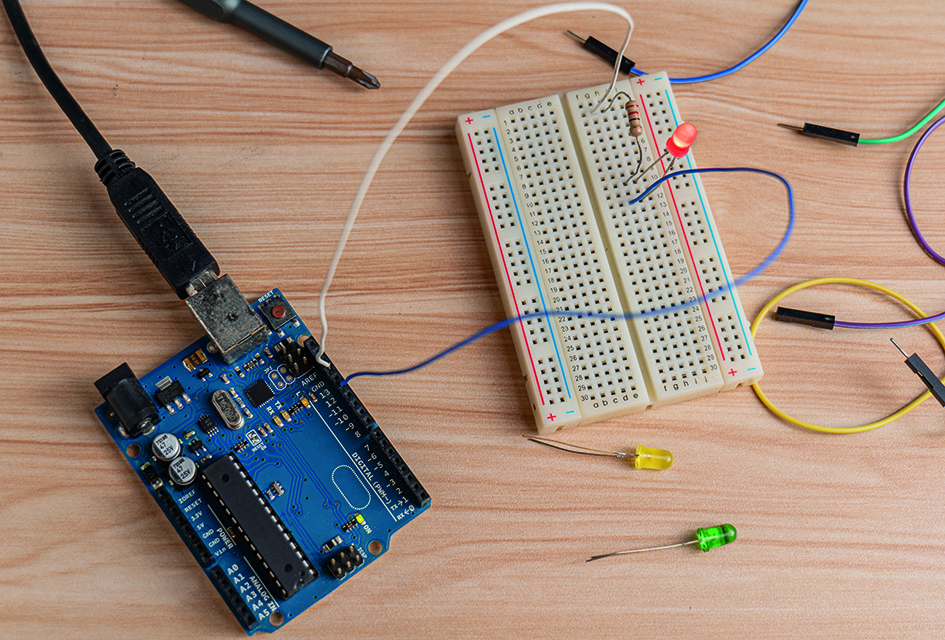 Computers are really just electrical machines that carry out actions based on ones and zeros, or ‘on’ and ‘off’ commands. Explore this binary concept by showing children a doorbell or a light switch, a buzzer or kettle. All of these have ‘on’ or ‘off’ functions depending on whether a circuit is connected or broken. Source some very simple circuits – they are quite cheap to purchase and demonstrate very clearly, even to young children, the cause/effect of a circuit.
Computers are really just electrical machines that carry out actions based on ones and zeros, or ‘on’ and ‘off’ commands. Explore this binary concept by showing children a doorbell or a light switch, a buzzer or kettle. All of these have ‘on’ or ‘off’ functions depending on whether a circuit is connected or broken. Source some very simple circuits – they are quite cheap to purchase and demonstrate very clearly, even to young children, the cause/effect of a circuit.
glossary
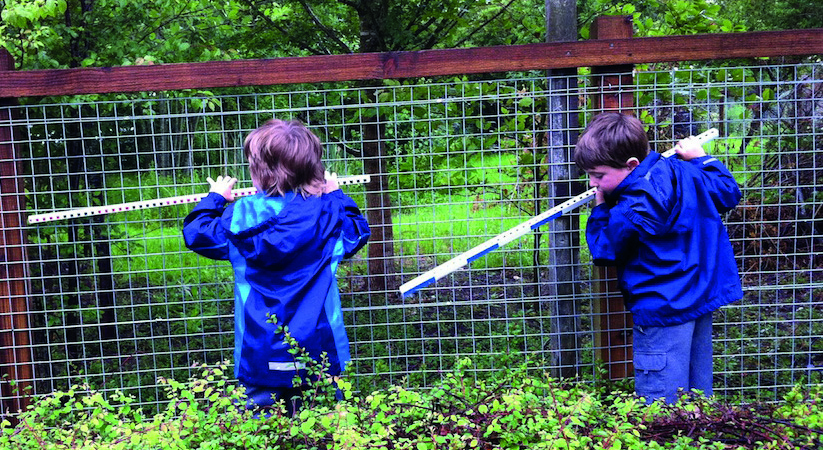 Coding is just instructions. When we teach children the stages to properly wash their hands, for example, we are ‘coding’ them.
Coding is just instructions. When we teach children the stages to properly wash their hands, for example, we are ‘coding’ them.- Mapping means showing information visually so we can locate places or objects. Labelling spades or pencils with a graphic so children can recognise where and what they are is mapping.
- Logic is a way of breaking down problems into step-by-step actions, based on reasoning; putting our wet-weather gear on before we go out into the rain is logical.
- Ciphers are disguised messages in code; e.g. you might use Makaton or BSL in your setting.
planning ahead
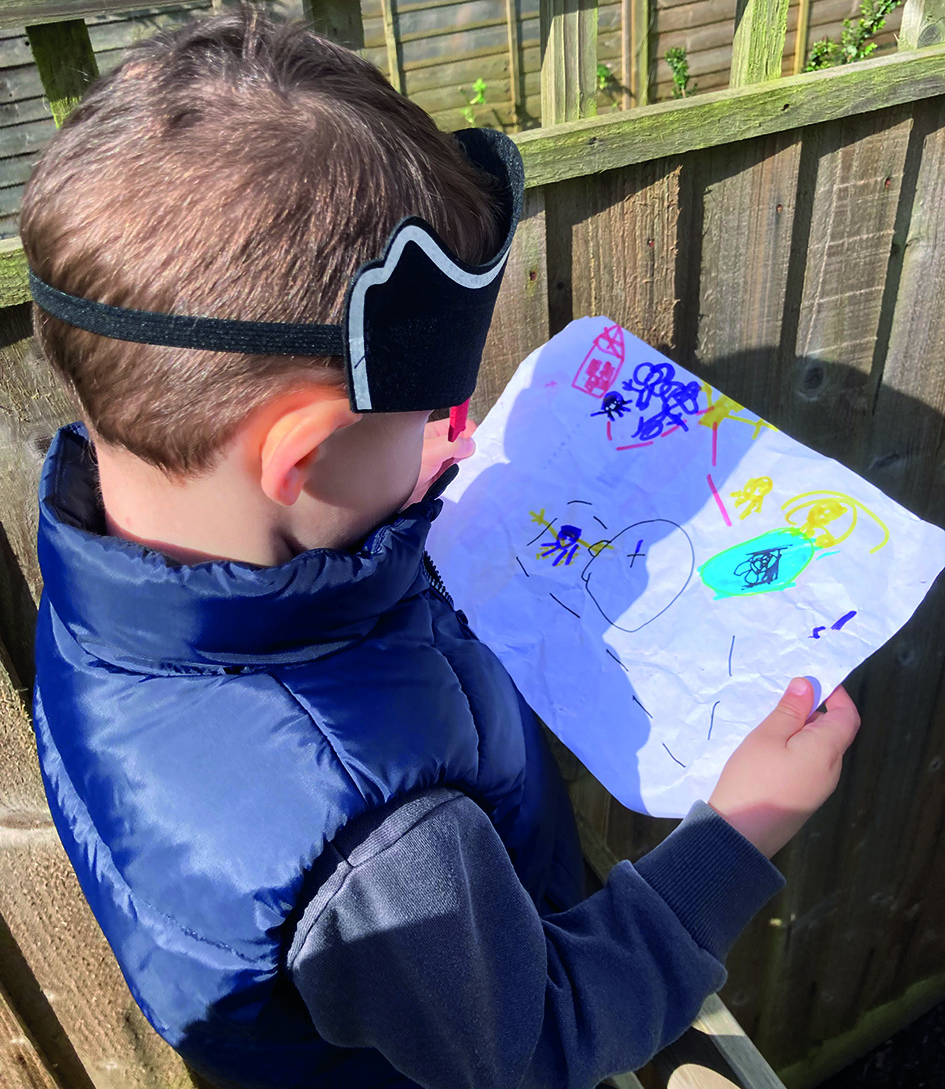 Set up a spy role-play area – include maps, magnifying glasses, masks, code wheels, chunky chalks and mark-making materials. Spying is about finding secret information; what secrets can children find outdoors? You might like to hide a few objects or create a scavenger hunt with simple instructions, such as marking Xs on the ground in various places, then leaving a code card at each place, perhaps with symbols such as an eye (look around), a shoe (look down), a mountain (look up high), or arrows for left or right.
Set up a spy role-play area – include maps, magnifying glasses, masks, code wheels, chunky chalks and mark-making materials. Spying is about finding secret information; what secrets can children find outdoors? You might like to hide a few objects or create a scavenger hunt with simple instructions, such as marking Xs on the ground in various places, then leaving a code card at each place, perhaps with symbols such as an eye (look around), a shoe (look down), a mountain (look up high), or arrows for left or right.- Cipher or code wheels can be made with paper plates connected with a fastener that allows the reels to rotate. Mark the letters of a child’s name on the outer plate and use code symbols for each letter on the slightly trimmed inner plate (choose a simple code such as coloured shapes). Can children spot the symbols that represent their name on the master code sheet?
- Take children on a sound-mapping adventure in a park or forested area. Provide them with large pieces of paper – or a roll of lining paper for everyone to share – and crayons or markers to create a map of the sounds they hear, such as birds chirping, rustling leaves, or flowing water. Encourage children to use symbols or colours to represent different types of sounds. This activity enhances auditory awareness, creativity, and by thinking about where the sounds are coming from, their mapping skills.









